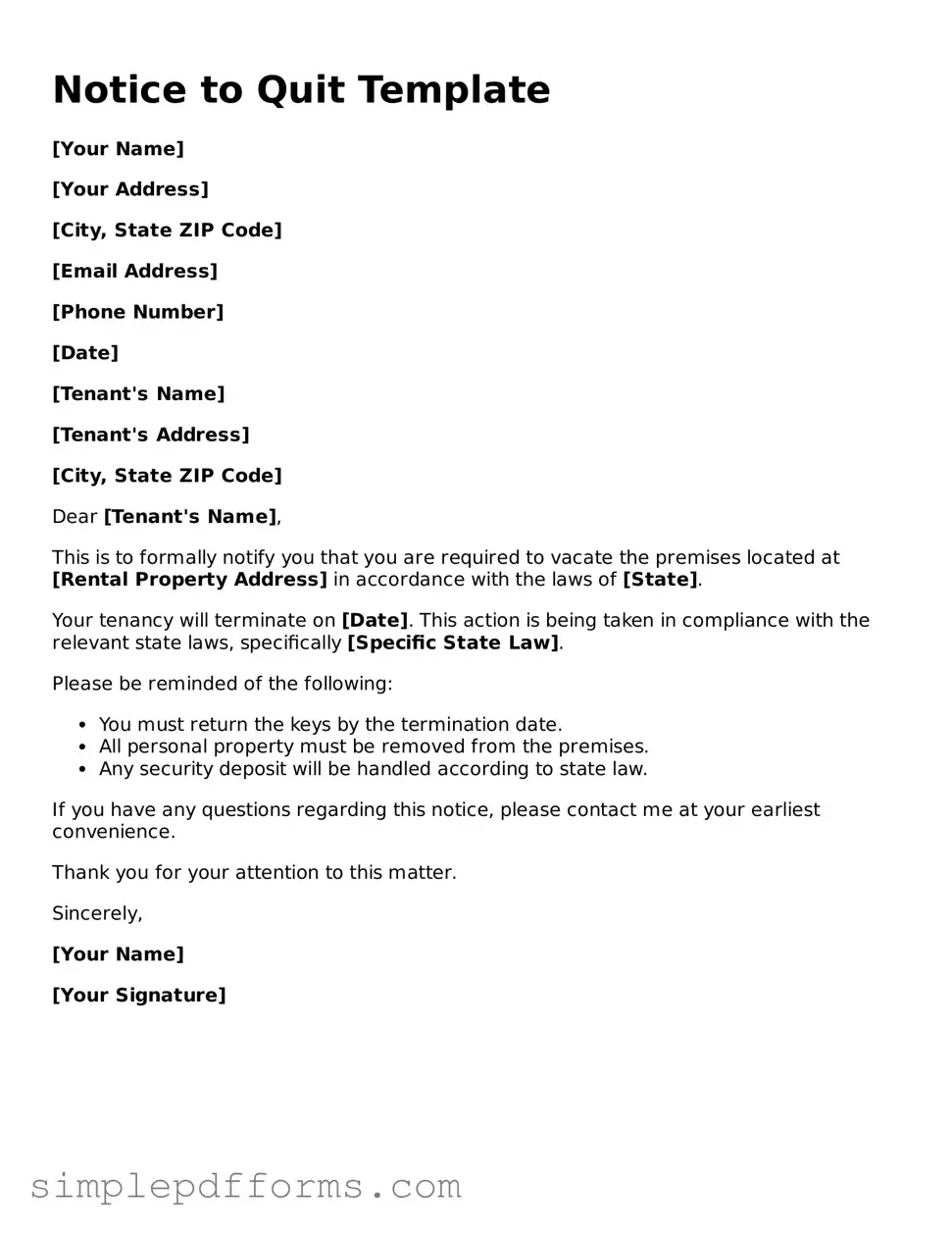Filling out a Notice to Quit form is a critical step for landlords seeking to terminate a tenancy. However, many individuals make common mistakes that can lead to confusion or even legal complications. Understanding these errors can help ensure that the process goes smoothly.
One frequent mistake is failing to provide the correct tenant information. This includes not only the tenant's name but also their current address. Omitting or misspelling these details can result in the notice being deemed invalid. Always double-check that the information is accurate and up-to-date.
Another common error is neglecting to specify the reason for the eviction. Whether it’s for non-payment of rent, lease violations, or other grounds, clearly stating the reason is essential. Without this information, the notice may lack the necessary context, making it harder to enforce if challenged.
Some landlords mistakenly believe that a Notice to Quit can be delivered in any manner. However, it is crucial to follow the proper delivery methods as required by state law. This could include personal delivery, mailing, or posting the notice on the property. Not adhering to these requirements can invalidate the notice.
Additionally, many individuals overlook the importance of including the correct date by which the tenant must vacate the premises. This date should be reasonable and comply with local laws. If the date is not clearly stated, it can lead to misunderstandings and disputes.
Another pitfall is failing to sign the Notice to Quit. A signature validates the document and signifies the landlord's intent. Without a signature, the notice may be considered incomplete and unenforceable.
Landlords sometimes forget to keep a copy of the Notice to Quit for their records. This documentation is vital should the situation escalate to court proceedings. Having a copy can provide essential evidence of the notice being served.
In some cases, individuals do not understand the specific laws governing the eviction process in their state. Each state has different requirements and timelines, and failing to comply can result in delays or dismissal of the case. Researching local laws is imperative.
Another mistake is using outdated forms. Legal requirements can change, and using an old version of the Notice to Quit may lead to issues. Always ensure that you are using the most current form available.
Finally, some landlords rush through the process without fully understanding the implications of the Notice to Quit. This can lead to mistakes that could have been avoided with careful consideration and attention to detail. Taking the time to review and understand the process can save significant headaches down the line.
